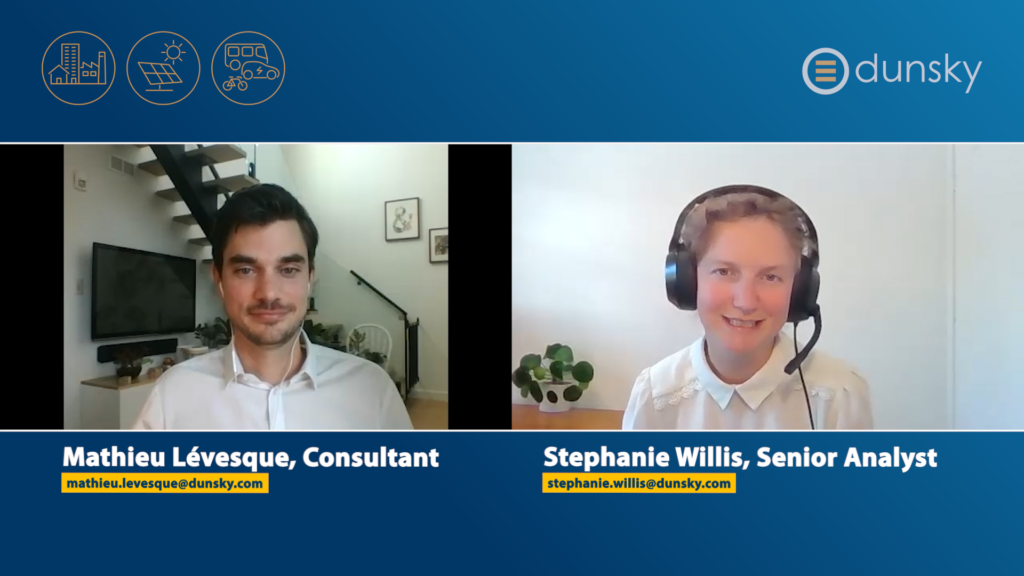Energy Transition Insights: A Smart Approach to Heating Decarbonization

In our latest episode of Energy Transition Insights, Consultant Mathieu Lévesque and Senior Analyst Stephanie Willis discuss the impact of increased heating electrification on utility peak demand, as well as strategies to manage peak through smart electrification including:
- Reducing the demand for heating during the winter peak through energy efficiency and demand response;
- Electrifying heating more efficiently by recognizing the peak benefits of ground source heat pumps;
- Partially electrifying heating using hybrid systems which significantly lower GHG emissions without increasing winter peak demand.

Dunsky’s HEAT TM model helps clients assess the technical, economic, and achievable potential for Heating Electrification strategies and programs. Used alongside our in-depth knowledge of electrification options, costs and strategic insights, HEATTM empowers our clients to make and defend informed decisions about their heating electrification programs, policies and strategies.